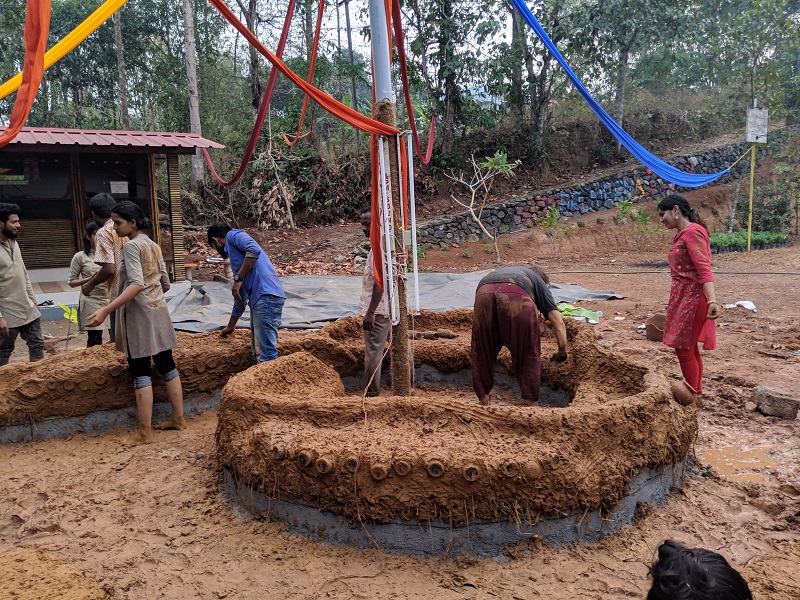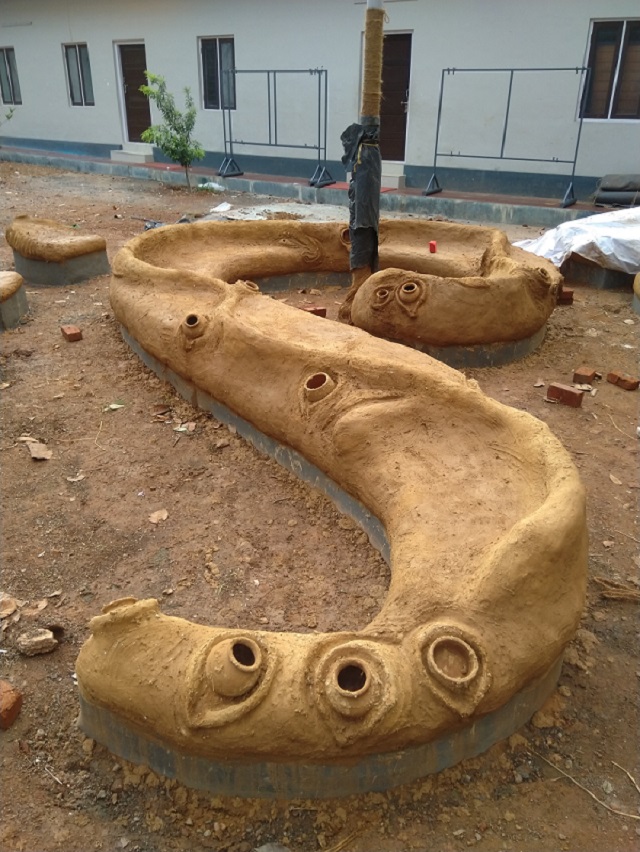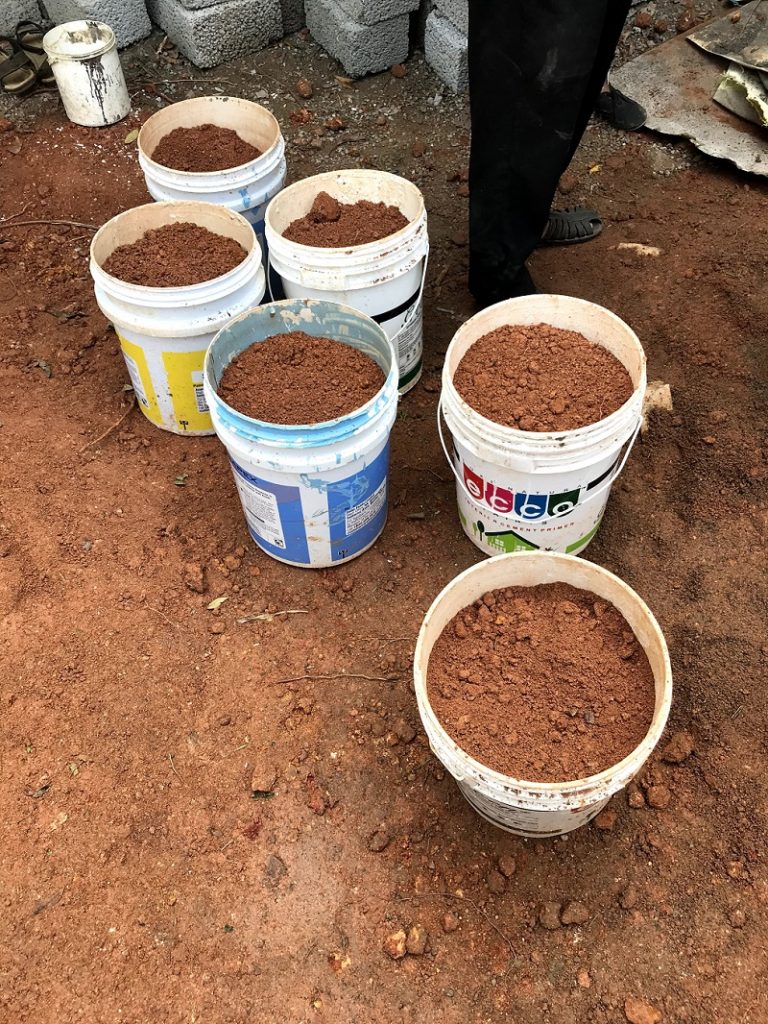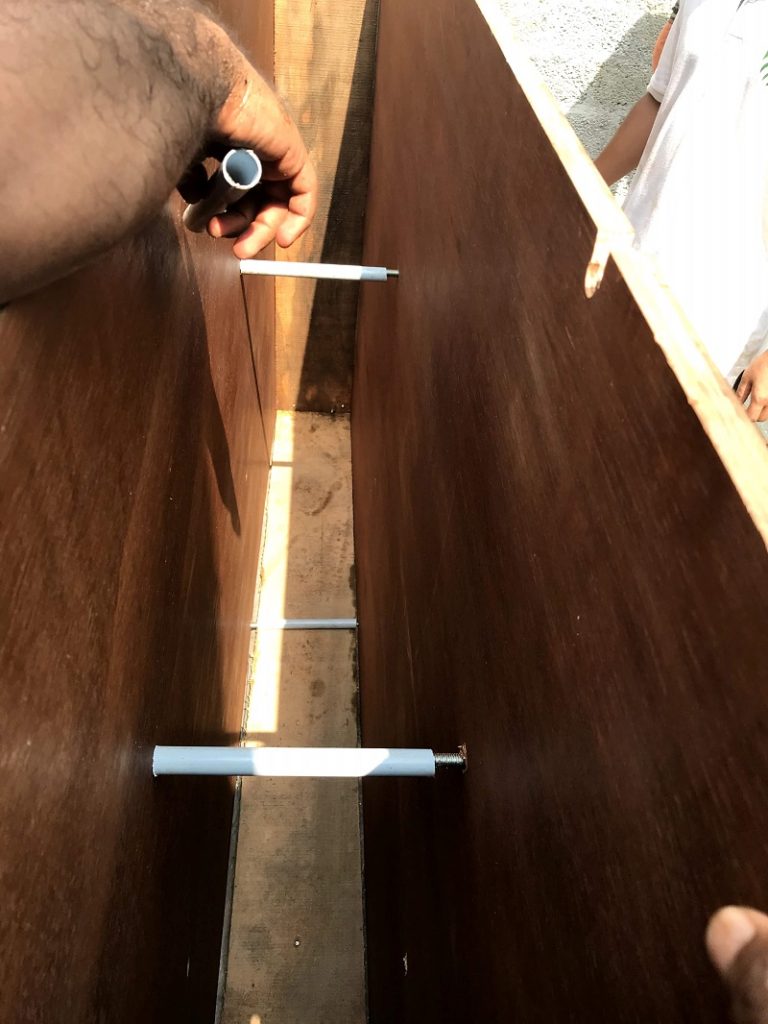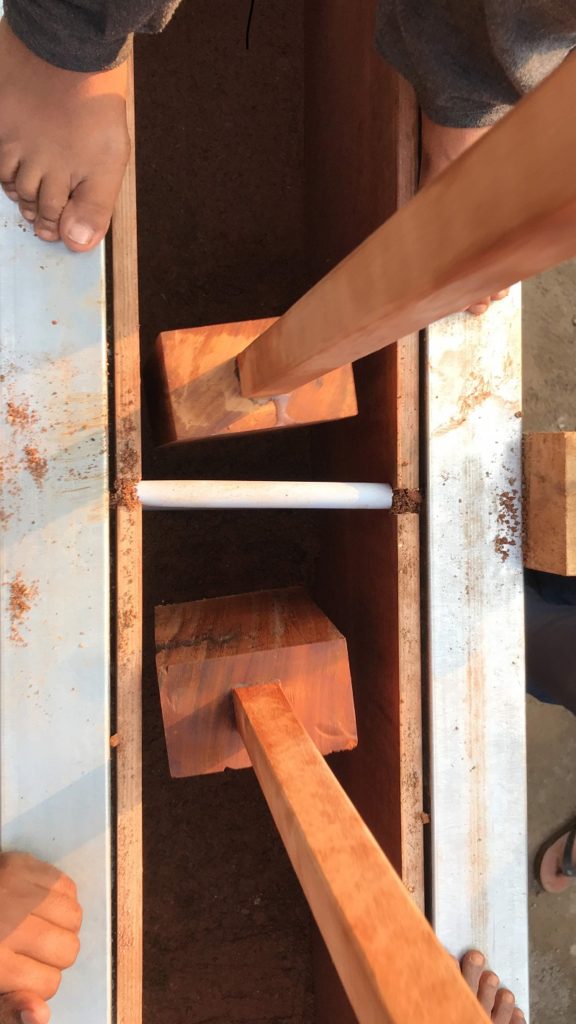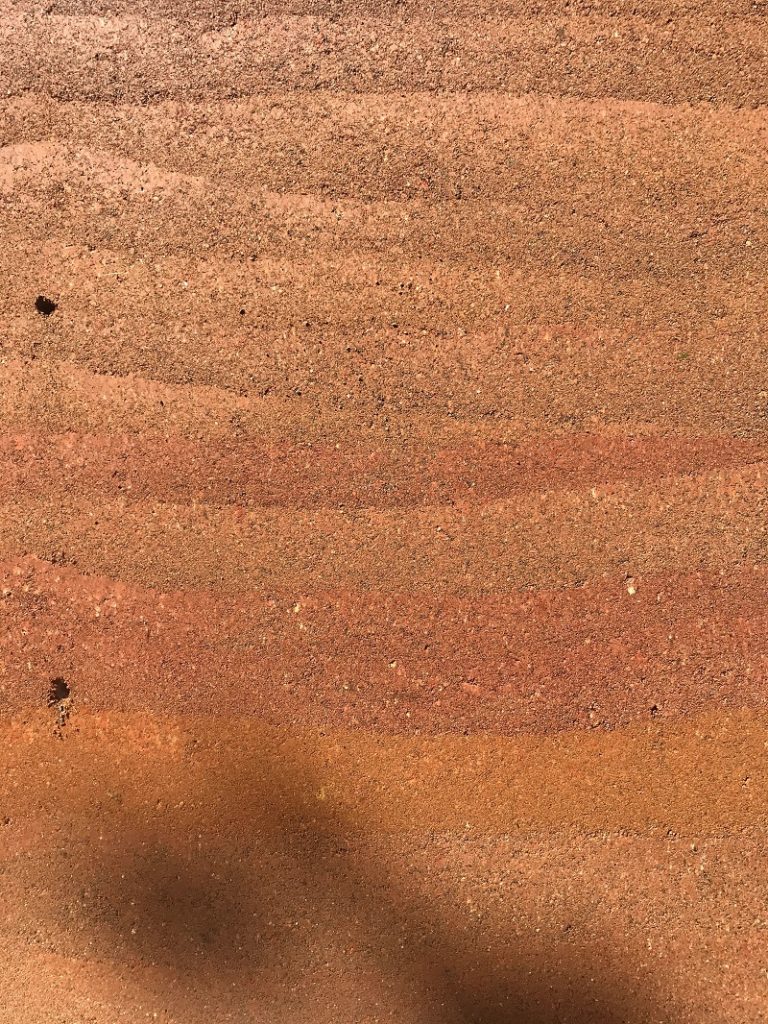Mud: An Eco-Friendly Construction Materials
Construction materials have always been one of the most essential elements in architecture. Every construction material has its different qualities and so is the process of its application. During ancient times, people only used natural building materials such as stone, mud/earth, wood, etc. However, with the growing population and the need for better efficiency, we started using energy-intensive, eco friendly construction materials and techniques. These energy-intensive techniques have now brought us to a point where we need to reconsider our choices in building materials. Mud is one of the most commonly available materials which can bring about a lot of change if well start using it more intensely in construction.
WHY MUD?
Mud has been the most basic building material since the beginning of human existence. Moreover, is still being used by almost 1/3rd of our world’s population for housing purposes. Even after being used so extensively, mud is often regarded with detriment. Mud has numerous inherent properties that give the material its potential importance throughout the world.
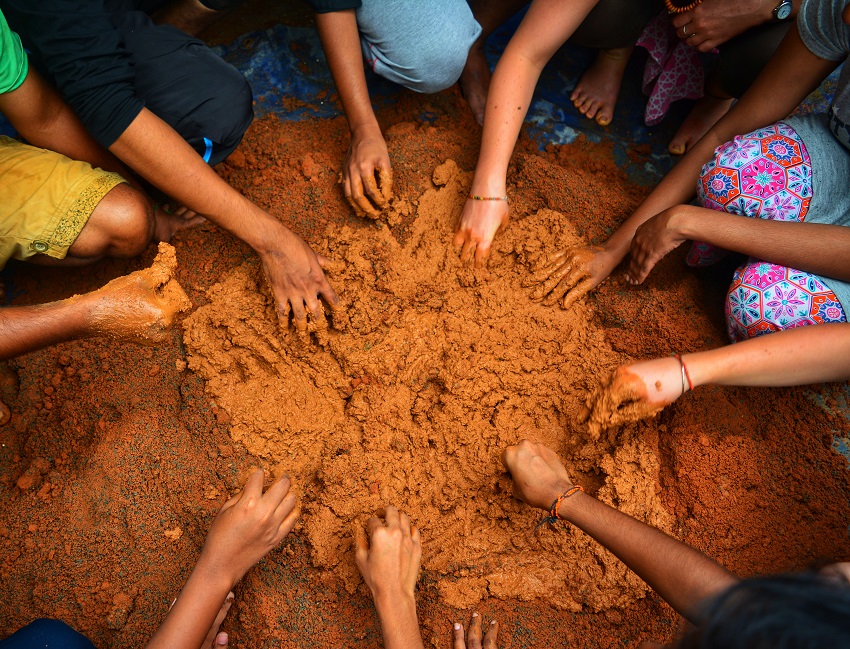
- AVAILABILITY: Mud is found in abundance in almost every part of the world. This attribute makes it cheaper than any other conventional building material. There are certain circumstances when it is difficult to transport construction materials from one place to another. In such cases, mud, because of its easy availability could be used as an alternative eco friendly material for construction.
- ENERGY CONSUMPTION: An enormous amount of fossil energy is consumed in the manufacturing and transporting of modern construction materials. However, due to the abundance and easy availability and lesser use of energy-consuming construction equipment, mud directly reduces the consumption of energy.
- RECYCLING: Recycling of modern materials for building construction is expensive, and does even not apply for most of the materials. However, the recycling of soil does not even require the input of any external source. Therefore, saving a lot of time and money. Another important benefit of using earth is that the characteristics of recycled soil post-construction remain the same. Whereas, in the case of modern building materials, it acquires sub-standard characters after recycling. This characteristic makes mud a perfectly reusable resource for construction.
- INSULATION: It is extremely malleable and offers a way better insulation than steel and concrete structures. It decentralizes the construction process as it utilizes local materials and construction technology. Mud as an insulation material prevents external heat from entering inside the building while maintaining a cool environment inside.
WHAT TYPE OF MUD SHOULD BE USED FOR CONSTRUCTION?
Mud doesn’t have to be transported from far off places. It can be dug directly from the construction site itself for use. As soon as we start digging, we see different layers of soil coming out of the earth. All of these soil types cannot be used for construction. Some of these earth types, when combined with different material, can act as a better material for construction. But how do we know which layer is the most suitable for construction?
Materials such as Gravel, sand, silt, clay and organic soils cannot be used separately. However, clay, when mixed with other binders and aggregates, acts as one of the main ingredients which are used throughout the building. The use of Binders, aggregates and stabilizers vary according to the technique that we are using.
Soils like gravel, sand and silt are often mixed with stabilizers such as cement, slaked and un-slaked lime for stability purposes.
MUD CONSTRUCTION PROCESS
FOUNDATION
Foundation is an integral part of any building. If the foundation is strong and can transfer load effectively then the building can stand still for even 1000’s of years. When considering Mud construction, the foundation has to be constructed out of some other stronger material rather than mud. There are various alternatives that can be used for the foundation in mud construction:
- Stone can be used in the foundation if locally available.
- In some cases, the topsoil might be loose and useless. However, the subsoil can be strong enough to carry the weight of a single-story house. In such a case, we can excavate the topsoil just like we would do for a stone or brick foundation. Then slightly dampen the excavated soil and put it back into the trench. Ram it to achieve the required proctor density. Repeat this until the trench is full.
- If bamboo is readily available, we can split it into halves for narrow rafts to be used in the foundation.
- A local alternative is, laying broken Matka (earthen pots) followed by ramming of the earth to achieve the required Proctor density.
MUD WALL CONSTRUCTION TECHNIQUES:
The type and process of mud construction differ from place to place. It varies as per the climate and the type of soil availability. As for every different type of mud we use a different construction method. Mud construction techniques can broadly be divided into 5 types:
- Wattle and Daub
- Rammed earth
- Adobe construction
- Cob wall construction
- Earthbag construction
All of these techniques are still used throughout the world for pocket-friendly, sustainable and Eco friendly construction.
1. Cob wall construction:
Cob is easy to learn and the most inexpensive mud construction technique. This vernacular technique has no contribution towards deforestation, pollution, and nor does it depend upon manufactured materials and power tools. Cob doesn’t require skilled laborers and is completely recyclable.
The word cob means “a lump of the soil “in old English Latin origins. Cob is formed by mixing 25-30% clay along with 70-75% sand and straw. The properties of this material are very similar to lean concrete. As the water from cob dries out, it hardens and takes its shape just like concrete.
All the cobs are simply piled one above the other layer by layer in the desired shape that we want. When creating window openings, regular operable windows or fixed glass windows can be placed at the preferred location and height while the layers are building up.
2. Adobe
Adobe or sun-dried bricks is one of the most popular mud construction techniques used throughout the world. Even today various workshops are being conducted to spread awareness and use of this particular technique.
- This natural building material is created using 25-30 % clay, 70-75 % sand, water, and other organic material like straw, manure, or sticks.
- The Masson mixes all of these ingredients and pours them into a wood-framed container to shape this mixture into bricks.
- The rectangular bricks are then kept under the sun for a few days.
- After drying for a few days, bricks are moved into a shaded area for air drying up to 4 weeks. During this process, the bricks are sprinkled with water to keep them from drying completely.
Adobe bricks are more beneficial in hot climates due to their greater thermal mass. It provides insulation from external heat waves. Sun-dried bricks are most commonly used in West Asia, West Africa, Spain, Eastern Europe, and South America.
3. Rammed earth
Another commonly used mud construction technique. Rammed earth walls are derived from the cob wall which had ununiformed widths. However, due to the framework used in this process, a standard width can be maintained throughout the building.

Step 1- Buckets filled with mud mix 
STEP 2- Two Wooden planks placed at the desired width. 
STEP 3- Rmming of earth filled in the cavity with the help of Ramrods layer by layer 
Finished Rammed earth wall
The raw materials used in this technique are clay (minimum 15% and maximum up to 30%) and the rest is sand, chalk, lime, and gravel. The compressive strength of concrete of similar thickness is better than rammed earth. However, carefully built rammed earth houses and domestic buildings can survive for years.
- Two parallel planks are held at a fixed distance with the help of metal rods or small cross pieces of wood while creating a cavity in between.
- The material mix is then tossed into the cavity between the two planks. It is further rammed with the help of wooden or metal ramrod.
- When one section is completed and is hard enough to stand still, the two boards are moved along. This entire process gets repeated again.
- For the second course, the two planks are moved up and the entire process is repeated over the first course.
These rammed earth walls, when constructed without reinforcements cannot withstand earthquakes. However, if we use reinforcement bars, wood, or bamboo reinforcement, it can prevent the failures caused by earthquakes and storms.
4. Wattle and Daub

Wattle- a woven lattice of wooden strips, and Daub- mud mixed with other binders’, aggregates and reinforcements, is used. The daub is either mixed by hand or with the help of livestock.
- Binders are those substances that hold the soil together, these include Clay, lime, chalk dust, and limestone dust.
- Aggregates provide the mix with its dimensional stability and strength. The materials include earth, sand, crushed stone, and crushed chalk. The size of these aggregates depends upon the wattle design that we are using.
- Reinforcements materials such as straw hair, hay, or some other fibrous materials hold the mud mix together. It preventing shrinkage and allows flexibility.
This method is one of the most sustainable and eco friendly construction types due to its better stability and quick construction:
- First, a mesh of bamboo cane and straws is created and hung in between the gaps of the timber-framed structure.
- Mud mix is then plastered over this bamboo mesh
- Further, it is whitewashed to increase resistance to rain.
5. Earthbag construction
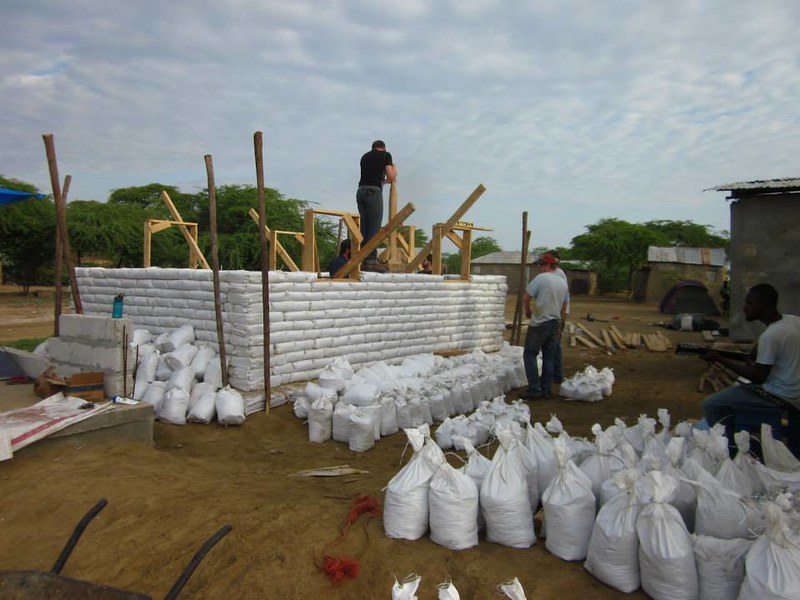
This construction method was inspired by the bunkers built by the military. As the name suggests the process includes earth (mud) and gravel-filled bags as a construction material. The bags are either artificial or organic. The most used bag is made of woven propylene which is an artificial material. Other organic materials include hemp, gunny sacks, burlap or other natural fiber bags.
- Earthbag construction begins by first digging a trench.
- Multiple rows of these bags are filled with readily available inorganic material.
- Each layer above the foundation will have one or more strand of barbed wire on top.
- The heavyweight of these earth-filled bags pushes down on the barbed wire strands while locking the bag in place.
- This process is then repeated layer by layer in the desired shape and height of the structure.
MUD MORTAR:
Mortar is a material mixture used for filling in between the gaps for holding the bricks and blocks in place. The clay that we use for construction can also be used as mortar. There are few factors that we need to keep in mind before using clay as a mortar:
- The clay should be free from all the unnecessary elements such as gravel and pebbles. To avoid this, clay can be sieved when dry.
- To avoid cracks and shrinkage, too much clay should not be used.
- When constructing the walls, sometimes we prefer adding stabilizers such as lime or cement for better strength of the walls. In such cases, mortar should be stabilized at least 1.5 times more than the mud blocks.
Ideal mortar mix= clay + 45-50% sand + 7.5 % cement/lime
PLASTER
The cob, rammed earth and adobe walls often have a rough finish so to smoothen it out, we need to apply a finishing layer of plaster on it. It is often recommended to leave the mortar between the mud blocks a little rough and not scrape the extra part out. This extra mortar would act as a key to hold the plaster. Plaster could be of just mud or mud with some other stabilizer such as cow dung, lime, or cement.
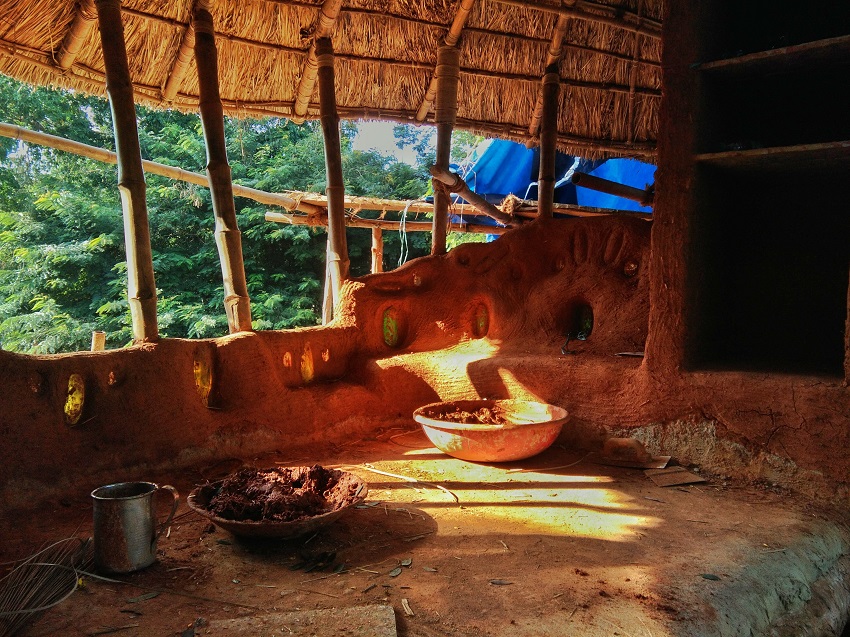
Building with earth is a sustainable, eco friendly as well as a cost-effective alternative. With proper stabilization and structural techniques, mud can surely prove to be a material of the future. Various environment friendly construction materials, including Compressed and stabilized earth blocks (CSEB) even have the power to be used for high rise structures. The researchers are still working upon bringing the best out of this eco friendly construction material.
